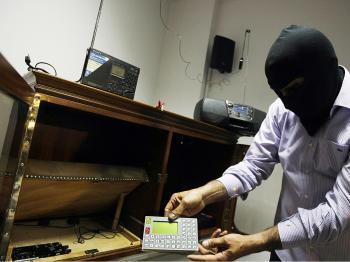Byblos, located around 35 km north of Beirut, Lebanon, is one of the richest archaeological areas in the Middle East. It is believed to have been founded around 5000 BC and was inhabited by several civilizations throughout history, making it a significant attraction to archeological studies.
Phoenicians, Egyptians, Persians, Greeks, Romans, Byzantine’s, Arabs and Turks, all settled in Byblos and built their towns, castles, and temples. They took advantage of its strategic location on the Mediterranean Sea, which facilitated trade with other parts of the world. Located at the foot of timber-rich Lebanese mountains, Byblos was a source of cedar shipments to the Nile Delta. Trade goods from Egypt’s 2nd dynasty have been found there.
Byblos is now believed by many to be the oldest continuously inhabited city in the world. Even the Phoenicians considered it an ancient town. Though it is hard to detect the very beginnings of Byblos, modern scholars say it goes back 7,000 years.
The Greek gave Byblos its name, which means papyrus in Greek, as it was an important spot for papyrus trade. Papyrus, and writing are central to Byblos’ legacy. The city is known for being the source of the Phoenician alphabetic script, which is the root of today’s alphabet. The most famous example of this script can be found on the sarcophagus of King Ahiram in Beirut national museum.
However, it is now known as Jbeil, a name given by the Phoenician and mentioned in the Bible, referring to the nationality of the builders of the Salomon temple.
Landmarks of An Ancient Land
Steeped in cultural relics, Byblos is a constant fascination for archeologists and historians. A temple built around 1600 BC is called Temple of the Obelisks because of the many obelisks found within, along with many precious objects sealed in clay jars and hidden under the floors.
Another cultural landmark is an important military base in the 11th century. The Crusaders built the Castle in the 12th century from indigenous limestone and the remains of Roman structures.
The Fossil Museum in the souks area not far from the archaeological site holds a collection of fossilized fish, sharks, eel, flying fish, and other sea creatures; some are millions of years old. Many fossils are excavated from the mountains above Byblos.
One of the biggest attractions in Byblos is St. John the Baptist Church, whose construction started during the Crusades in 1150. Known today as St. John-Marcus Church, it was severely damaged during the British bombardment of 1840. In 1947, it was restored and the bell tower was added. The architectural style of the church is Roman but reflects the oriental Byzantine influence.
In the southeast section of Byblos, is a small square built by prince Youssef Chehab in the 18th century. East of the square are the old souks where people can shop for souvenirs and antiques. This historic quarter holds a picture of a well-preserved antiquity. Pedestrians stroll around the byways and enjoy the historic buildings and architecture. The historic quarter hosts Byblos International Festival, an annual event that includes live concerts performed by local and international artists.
The history in Byblos is far from dead, nor is it only present encapsulated in museums—it is living amid today’s modernity. Byblos is also home to the oldest port in the world. Byblos Port has been active for more than 5,000 years. Fishermen and trip boats can be seen next to a rocky headland where pedestrians take their daily walk in the evening.



